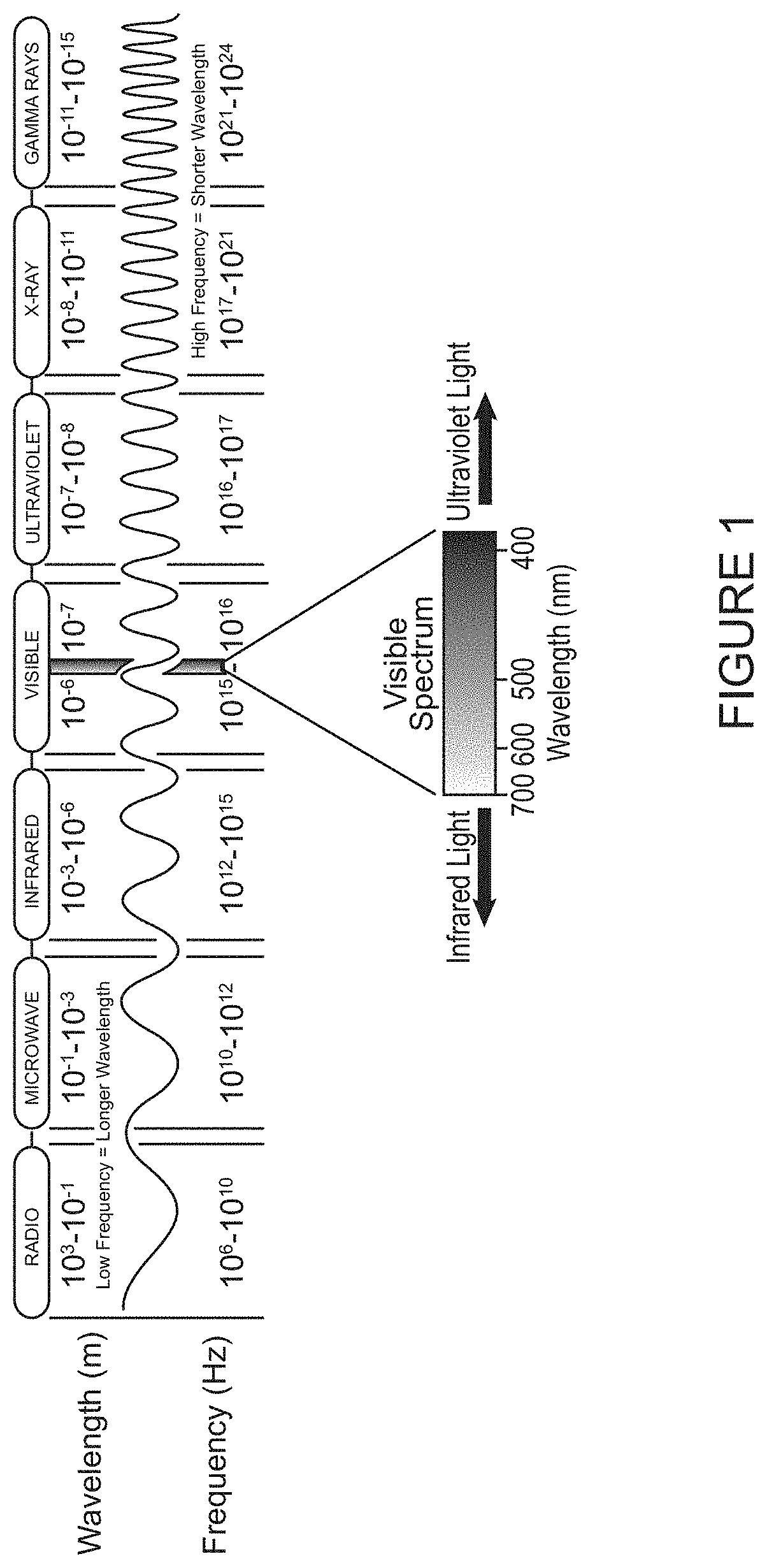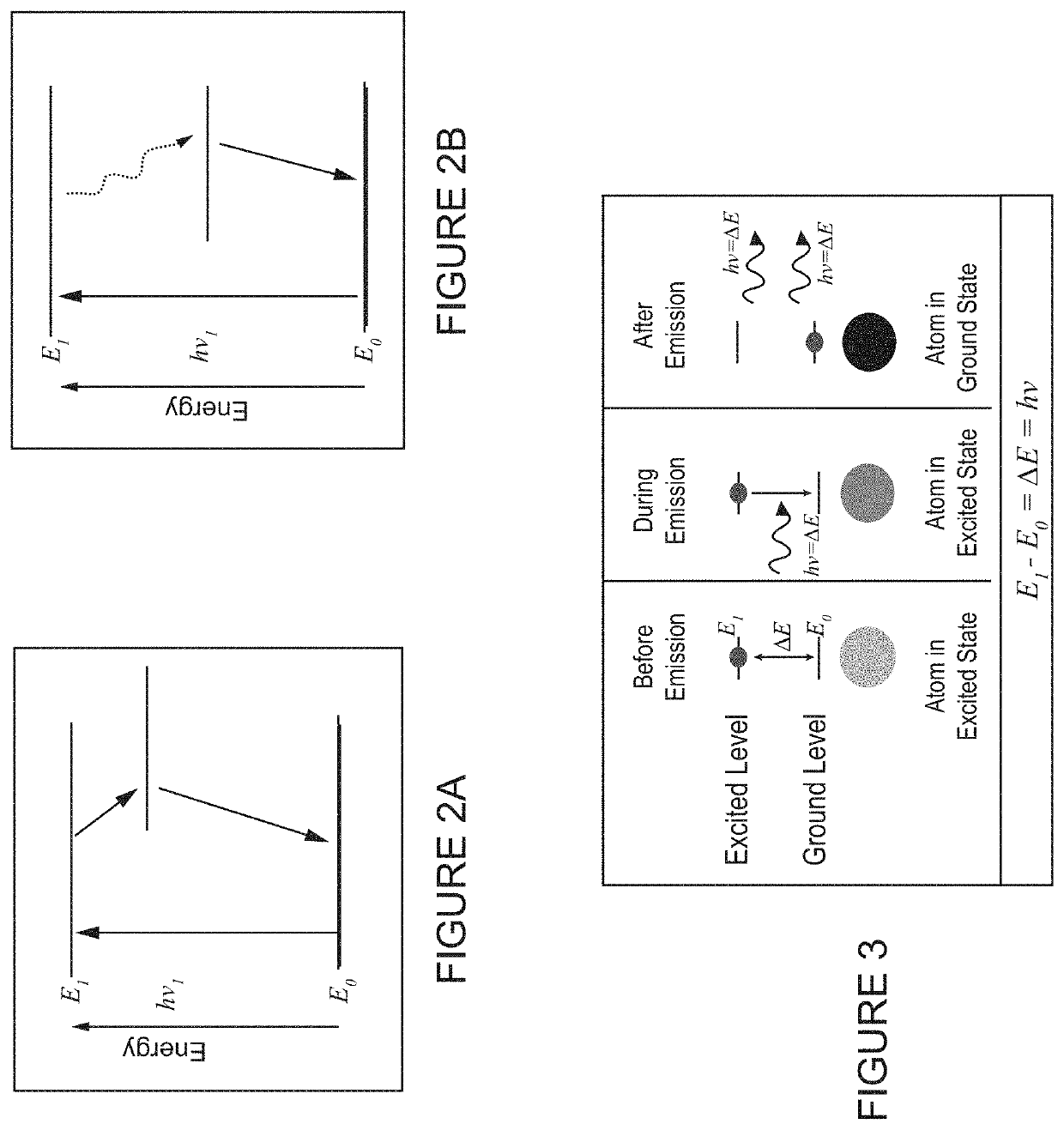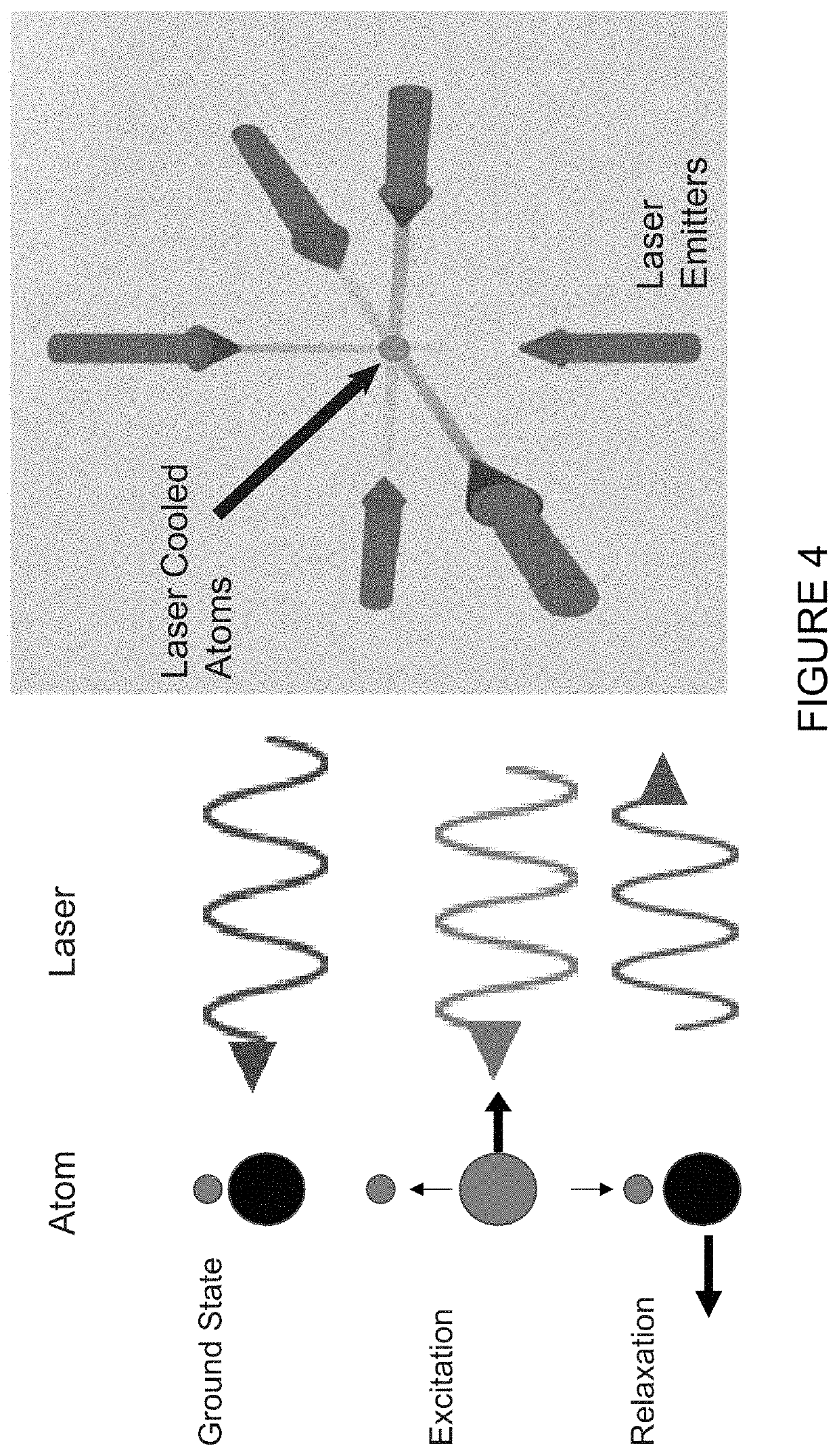This highlights a central challenge of using any invasive device at a large scale, which is how to justify the added risk to normal brain areas.
Access to sulci, subcortical and medial / ventral areas is topologically difficult and perforce carries
increased risk.
Endovascular approaches can access certain area but carry other risks such as
stroke.
Analysis of existing neuromodulatory techniques reflects similar issues.
However, rTMS has a relatively
low resolution and limited penetration in deep brain areas.
The manner and degree in which these
low frequency eddy currents dissapate is a relatively unreliable and unresolvable poly-mechanism and cannot be controlled.
If a
photon in the x-
ray band of the spectrum interacts with an atom, it causes an
electron to be completely ejected from its shell, ionizing the host atom, disrupting its covalent bonds, and potentially damaging or breaking molecules including strands of
DNA.
Until recently,
solid-state MASERs have been large devices with low efficiency and considerable
heat generation, necessitating cryogenic cooling to sustain
continuous wave (CW) operation.
Hence, their utility was limited to certain applications.
That paper described an experimental benchtop MASER, essentially a single emitter, housed in a large
copper resonator box, not a design suitable for commercial manufacture nor in large
flat panel arrays.
Since the potential for a room-temperature MASER has only recently been realized, there is little prior art on the commercial manufacture of MASER emitters.
Some lasers, like Nd or Yb
diode-pumped
solid-state (DPSS) lasers, can be used in either
continuous wave or pulsed operation, while other lasers are not suitable for any pulsed operations.
Hence in one state (low Q) the switch creates
cavity loss,
poor quality of
resonance, and prevents lasing; in the other case (high Q), there is essentially no loss, so lasing can occur.
In EO modulators, a
crystal rotates the polarization of light passing through it when a
voltage is applied, and disrupts lasing.
The precision and reproducibility required for this
surgery would be difficult to achieve through other means (Asbell et al., 2001).
However, Lasers cannot penetrate optically opaque tissues, limiting their use to externally accessible areas or requiring
surgical access for targeting deeper pathologies.
If the two coincident beams have the same frequency and phase, the result is constructive interference, reinforcing the amplitudes.
If they are
out of phase, by ½ period, the result is destructive interference.
Other combinations result in more complex, but interpretable, interference patterns.
The observation of sub-
wavelength structures with microscopes is difficult because of the Abbe
diffraction limit.
These techniques offer better resolution but are expensive, suffer from lack of contrast in biological samples, and may damage the sample.
However, the brain is not a uniform substance.
These areas have been targeted with invasive therapies such as
deep brain stimulation (DBS) and non-invasive therapies such as
Transcranial Magnetic Stimulation (TMS), though the effects have been modest given the limited volume modulated by DBS along with the poor spatial resolution and steep attenuation of TMS energy for deeply situated targets.
However, once these particular proteins aggregate into increasingly larger
pathological aggregates (sheets, folds, fibrils, and tangles) they become insoluble and therefore both inaccessible and highly resistant to normal cellular mechanisms for
protein degradation.
For axons this may result in increased
divergence (one
signal sent to many cells).
Signal propagation speed linearly increases with
diameter; however, the metabolic cost also escalates due to the squared relationship between
diameter and cross-sectional area.
Within the generally large metabolic costs of the brain, synaptic transmission and spike generation are particularly energy intensive due to the high ATP requirements of ionic pumps.
However, other functional properties depend on more complex shape and size
metrics such as branching distributions and patterns.
Branching patterns and distributions can be measured in numerous ways providing a challenging choice for the best
metrics to explore for a given
cell type and features of interest.
Krichmar et al., loading CA3 pyramidal
cell reconstructions into an electrophysiological
simulation environment, found that size morphometrics affect firing activity but cannot account for all aspects of electrophysiological behavior.
Given the relatively small number of observations enabled by experimental
data acquisition, it is impossible to know if there is only a subset of tree shapes that fully represents a given
cell type.
This becomes a complex problem, however, because biological bodies are heterogeneous and complex in shape, making an exact solution impossible.
In the near field
gain may vary, which may be an issue in determining
exposure limits.
Measurement of internal fields, however, is not possible in humans, and has only been done in animals.
For example, because knowing SAR gives a measure of the internal fields, which could possibly cause effects other than
direct heating.
Measurement of External Electrical Fields: Because it is difficult and impractical to measure internal electric fields, in general we must measure external fields and base
exposure limits on these.
Measurement of internal fields is difficult but can be done with non-perturbing implantable probes.
Typical focusing systems are limited in precision due to
accessibility to the target, spatial discontinuities in the structures, scattering, and geometric precision.
Target volumes under several millimeters are not resolvable.
These ions and radicals, which may be formed from any of the available
ground state atoms in the target cell or
biological materials, can produce irreparable damage to
DNA, proteins, and lipids, resulting in the cell's
senescence or death.
It is noteworthy to state that the use of radiosurgical mechanisms may result in unwanted mutations that may not be senescent or dormant and give rise to neoplastic tumors.
Intelligent delivery systems that are responsive to a single internal or external stimulus often lack sufficient selectivity, which compromises the
efficacy and induces undesired side effects.
However, simultaneous recording and stimulation revealed that was not true.
However, DBS
surgery is invasive and carries a small but non-trivial 5-10% risk of hemorrhage and effectively only two electrodes can be placed.
2) Since the two transitions share the same
excited state, the resonant transition, and by extension the whole 3-state
system, is fully entrained in oscillating between the Excited and
Intermediate state, resulting in a destructive interference with the other transition.
Over multiple iterations, this leads to significant cooling.
Either one could disrupt the function of the channel and potentially the
neuron by impairing their ability to participate in neuronal signaling.
In addition, cells can be induced to undergo
programmed cell death, or
apoptosis, under a variety of circumstances such as a sustained imbalance between energy demands and the availability of glucose and
oxygen.
In another contemplated use, glucose molecules in a particular volume of the brain are biased toward biologically unfavorable conformations limiting their availability and eventually resulting in energetic exhaustion and
cellular death.
However,
surgery cannot remove infiltrating cells in the surrounding brain, which inevitably leads relapse and the demise of affected patients.
Devising an effective therapy for infiltrating cells has been vexingly difficult: Most chemotherapeutic agents do not cross the
blood brain barrier;
Immune modulators are not as effective in the brain which is “immune-privileged”, hence lacking many cell types needed to
mount an effective immune response;
Radiosurgery is suited for small well-circumscribed tumors (less than 3 cm), but not for GBM's, which are large and have indistinct boundaries.
These changes result in uncontrolled proliferation.
Collectively, these changes result in over-expression of transcription factors, receptors, and
metabolic enzymes.
 Login to View More
Login to View More  Login to View More
Login to View More 


